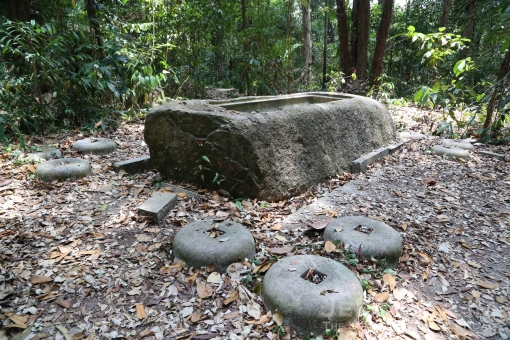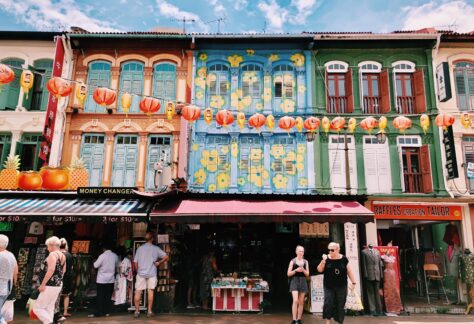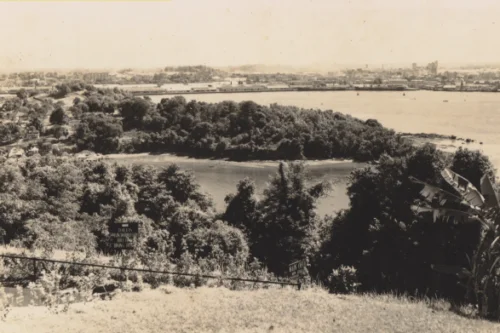Find out the history behind the fabled Syonan Jinja, a Shinto shrine dubbed to be the grandest of all in South Asia.
Commissioned on April 1942, two months after the fall of Singapore, Syonan Jinja was built to commemorate Japanese soldiers who have died in the battles at Malaya and Singapore during World War II.
Nicknamed Light of the South Shrine, Syonan Jinja envisioned to be a 1,000-acre large park complete with recreational and sporting facilities such as promenades, playgrounds, a swimming pool, and even wrestling arenas.
Constructing the Light of the South Shrine
The project was spearheaded by Major Yasuji Tamura, officer-in-command of the Japanese 5th Division’s Engineers Regiment, and was expected to be the grandest Shinto shrine in the south of Asia.
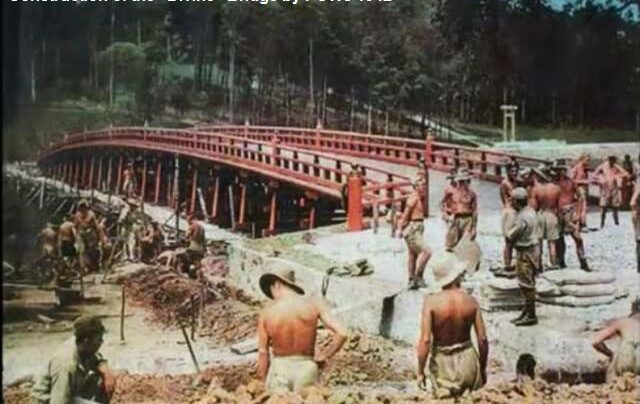
Syonan Jinja is one of two Japanese shrines constructed in Singapore. The other shrine, Syonan Chureito, was built at the top of Bukit Batok Nature Park and served as a memorial site for both Japanese and British soldiers that sacrificed their lives during World War II. Today, only a memorial plaque can be found at the hilltop of Bukit Batok Nature Park.

As the WWII battles against the Allied forces continues, the scale of Syonan Jinja was greatly reduced to divert resources to the Imperial Japanese Army.
Still, hundreds of trees were fell and tonnes of stones were used to pave the path. In total, it took over 20,000 Allied prisoners-of-war and almost a year to complete the Syonan Jinja.
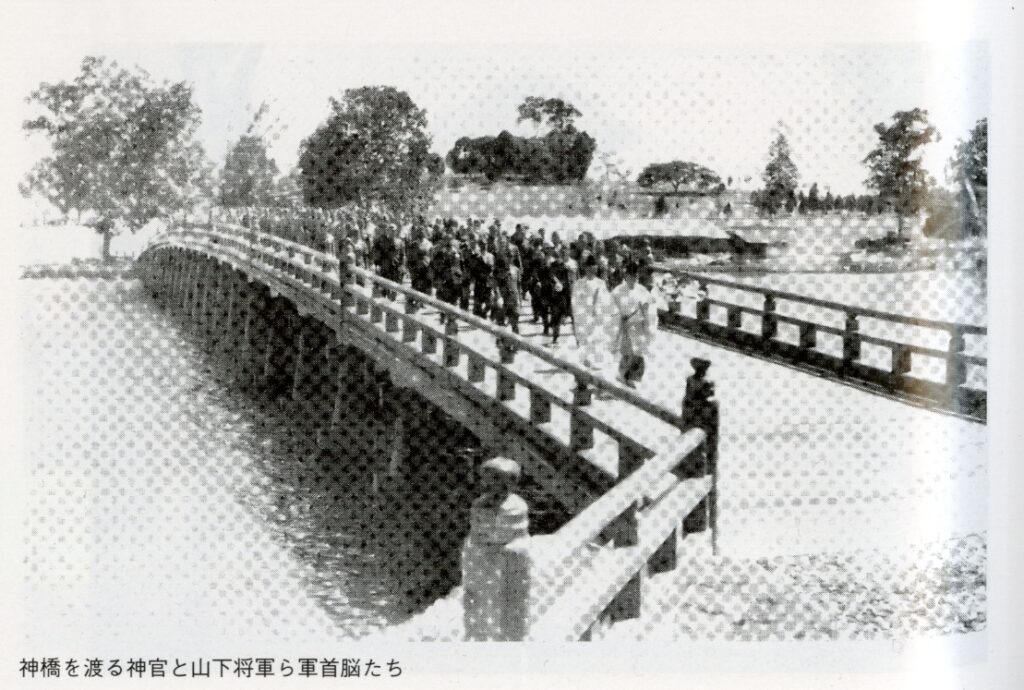
On 15 February 1943, the first anniversary of the fall of Singapore, Syonan Jinja officially opened to the public. A grand ceremony was officiated by Shigeo Odate, the first mayor of Syonan, to celebrate the opening of the shrine; Syonan is the official name for Singapore during the Japanese Occupation period.
You may be interested in: The History Behind Istana Woodneuk
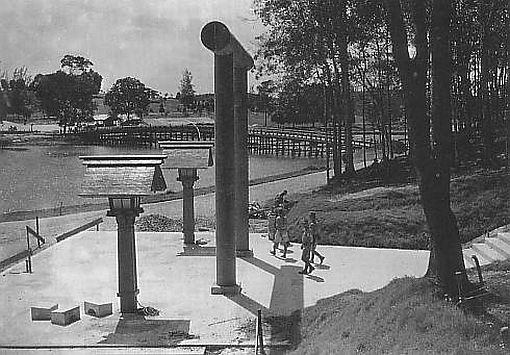

Syonan Jinja’s Architecture
Syonan Jinja was modelled after Ise Grand Shrine (Ise Jingu) in Japan. Ise Grand Shrin was built to honor the Sun Goddess Amaterasu Omikami whom the Japanese emperors were said to be the direct descendants of.
Many of the artefacts and stones in Syonan Jinja were either handcrafted by Japanese craftsmen in Singapore or imported directly from Japan.
It is said that four to five tonnes of pebbles meant for Bukit Timah Nature Reserve’s rapid gravity filter beds were instead used to construct a pebble stream at the foot of Syonan Jinja.
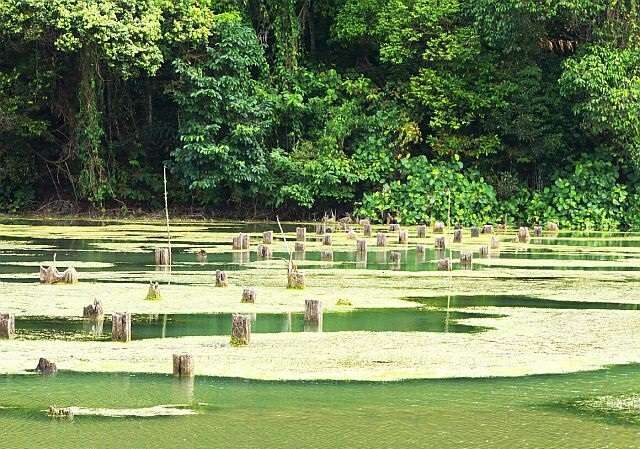
A highlight of Syonan Jinja is the Divine Bridge, a large stone bridge that connected the edge of the reservoir to a road leading to Torii Gate.
Grand Ceremonies

Syonan Jinja served as an important venue for ceremonies and celebrations of Japanese festivals. It was well recorded that the locals, often the youths and the well-established, were coerced into attending the ceremonies as a sign of submission and loyalty towards the Japanese empire.
A rare footage (from 1:23 to 3:30) featuring a ceremony taken at the Syonan Jinja.
Remnants of the Syonan Jinja
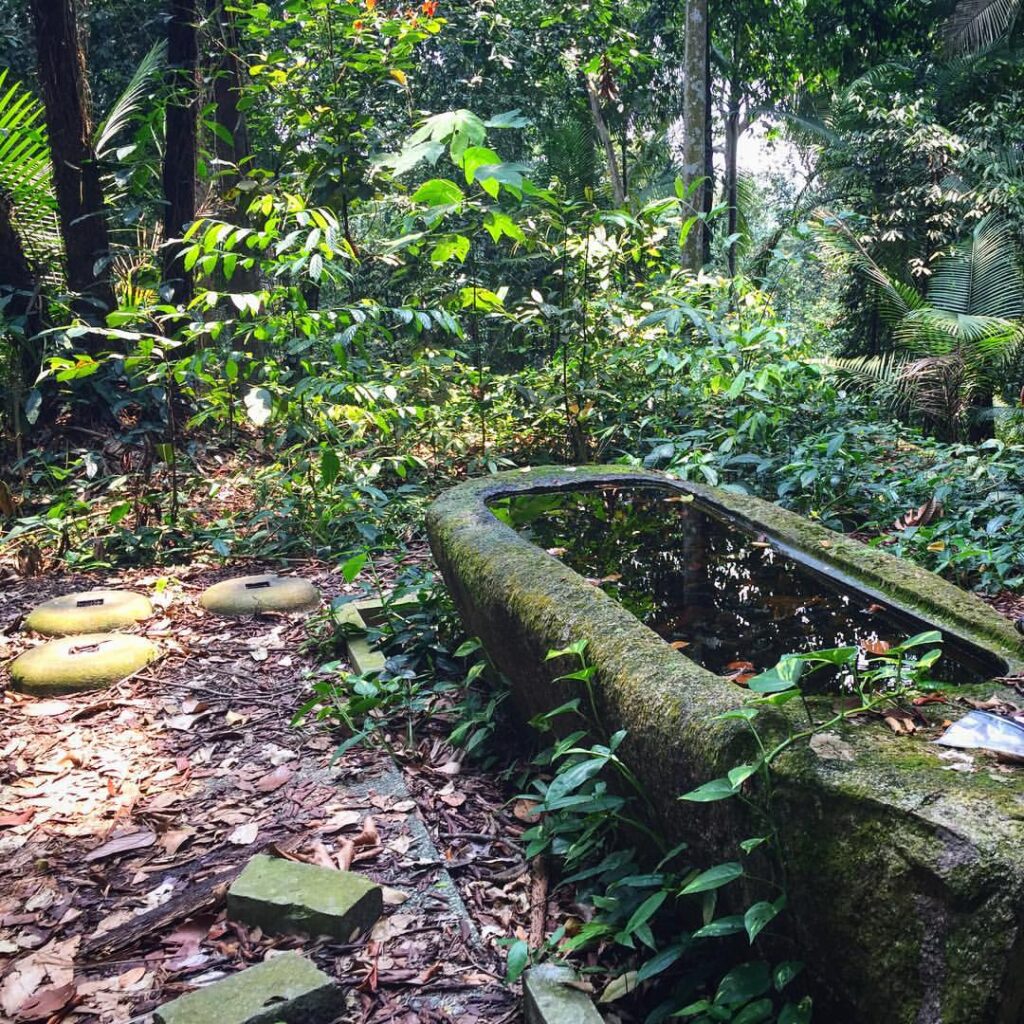
With the imminent defeat of the Imperial Japanese Army on August 1945, Syonan Jinja and Syonan Chureito were ordered to be burnt down to prevent desecration by the British; the burning of the shrines was an acceptable practice in the Shinto religion as it is perceived as a means to purify the site.
Today, only the stone steps and foundations of Syonan Jinja remains. The foundation of the Divine bridge can still be seen from a trail along MacRitchie Reservoir.
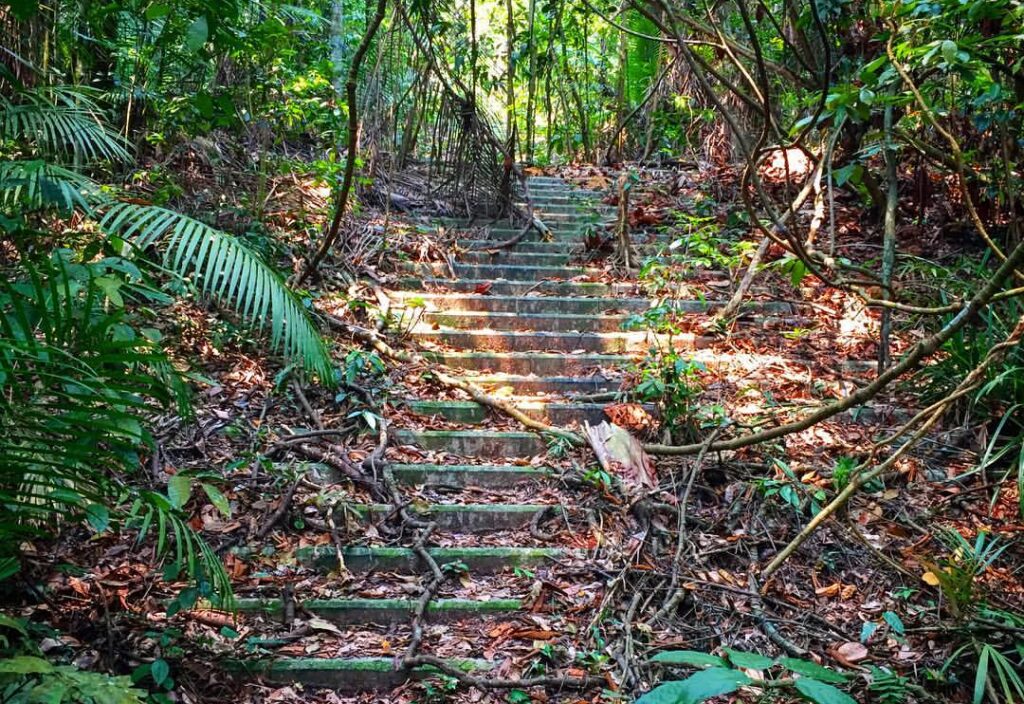
In 2002, the National Heritage Board listed Syonan Jinja as a historical site, making it an offence for anyone to enter the area. This however, have not stop local explorers from venturing into the forests of MacRitchie Reservoir in search of the abandoned shrine.
In November 2020, Syonan Jinja made headlines when it was reported that two 14-year-old ended up lost in the forests of MacRitchie Reservoir after veering off the MacRitchie trails to find the abandoned shrine. A team consisting of 50 personnels from the Singapore Police Force and Singapore Civil Defence Force were deployed to locate the teenagers.
They were rescued at approximately 9:30pm on the same night, nearly 6 hours after their ‘adventure’.
WARNING:
The ruins of Syonan Jinja are now off limits to the public. Any attempts to visit Syonan Jinja is considered trespassing.

